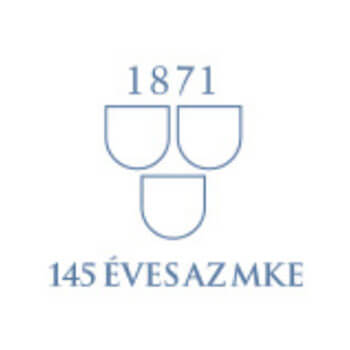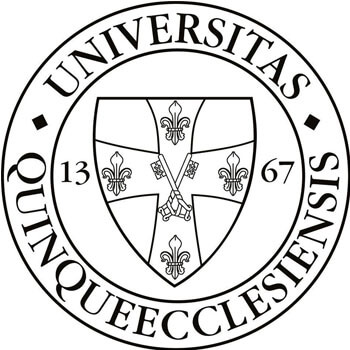Semmelweis University

Founded: 1769
Address: Ulloi ut 26.Address - Budapest, Hungary
Phone: +36 1 4591500
Address: Ulloi ut 26.Address - Budapest, Hungary
Phone: +36 1 4591500
Here you find out Semmelweis University complete information about fees, location, degree Semmelweis University offers, number, website, and much more. Semmelweis University is a leading university in Budapest - Hungary.
You can also find out jobs at Semmelweis University for students, teachers, and professors. We also update the database for an internship at Semmelweis University for students.
Semmelweis University is a leading institution of higher education in Hungary and the Central European region within the area of medicine, health sciences. As a specialist university, it holds a unique place within the country; its prominent role is demonstrated by the fact that approximately 42 percent of Hungary’s doctors, 70 percent of its dentists, 50 percent of its pharmacists and 27 per...cent of its health care professionals are Semmelweis graduates.
A truly international community, programmes are offered in three languages (Hungarian, English, German), and foreign students account for nearly third of the around 10,000 students studying at the University’s five faculties.
In addition to teaching, Semmelweis University provides a wide range of health care services. With almost forty patient care units organised into four clinical blocks, it is one of the largest health care institutions in Hungary.
Research, development, and innovation comprise an important part of the University’s three-fold mission. Many of its professors are members of the Hungarian Academy of Sciences, with close collaboration between the two institutions in numerous areas.
Semmelweis University received the prestigious Research University title for the second time in 2013.
Semmelweis University is involved in higher education vocational training, specialist postgraduate training, higher education vocational training, the cultivation of the next generation of scientists, and nurturing talent. The University organises international conferences and is represented on numerous international scientific boards. Its academic reputation is well-regarded around the world.
Semmelweis University’s history started more than 240 years ago in 1769, when Queen Maria Theresa added a medical faculty to the University of Nagyszombat (now Trnva, Slovakia).
Not long after, the university moved first to Buda then to Pest (now Budapest) and, once the university settled in its permanent location, a period of great development commenced.
The number of departments and clinical beds grew – so much so, in fact, that by 1838 congestion had become so great, that even the Hungarian National Assembly addressed the Medical Faculty’s situation.
Despite the tight circumstances, the Faculty’s professors strove to keep pace with international medicine, which was gaining momentum and becoming increasingly specialised during this time. Unfortunately, many were imprisoned or forced into emigration following the defeat of the Hungarian Revolution of 1848. As a result of the large-scale construction projects that commenced in the 1870s, Üllői út, then considered the outskirts of the city, became the central axis of the Medical Faculty, complete with clinical departments, a botanical garden, and the directorate.
Although women were allowed to be admitted to the Faculty starting in the 1800s, it was the First World War that brought real change in this area, when the majority of the professors and students enlisted in the army. The situation had barely begun to normalise following the end of the war when the economic crisis ensued, greatly reducing the amount of state money spent on health care. In spite of this, the Medical Faculty achieved international recognition by this time, and it was also during this period that the system of qualifications used today were developed, and the length of study increased to six years.
During the Second World War, as the front neared Budapest in 1944, the authorities tried to evacuate the Medical Faculty to Germany. However, due to the Faculty’s resistance, this attempt was only partially successful. The Faculty sustained considerable damage during the Siege of Budapest, as the majority of its equipment was destroyed, and its buildings suffered significant damage.
In the early 1950s, several hospitals were attached to the university and turned into clinics. At the same time, the Medical Faculty became an independent institution as the Medical University of Budapest; it took on the name of Ignác Semmelweis on the Faculty’s bicentennial.
Numerous students, lecturers and staff took part in the Revolution of 1956, predominately taking care of the wounded. Many of them were forced into emigration following the Soviet invasion of Hungary, while those who remained faced retribution.
Intensifying international relations starting in the 1960s allowed the university to keep pace with the international scientific world. The German and English-language programmes were started, and other significant developments took place, such as the construction of the Theoretical Block at Nagyvárad Tér (NET). By the end of the 1990s, more than 3100 hospital beds were in use at the University’s clinics.
On January 1, 2000, Semmelweis University of Medicine (SOTE) merged with the Imre Haynal University of Health Sciences (HIETE) and the University of Physical Education (TF), and was renamed Semmelweis University. With the addition of the Faculty of Health and Public Services in March 2010, the University comprised a total of six faculties, namely the Faculty of Dentistry, the Faculty of Health and Public Services, the Faculty of Health Sciences, the Faculty of Medicine, the Faculty of Pharmacy, and the Faculty of Physical Education and Sport Sciences until September 1, 2014.
The Faculty of Physical Education and Sport Sciences separated from Semmelweis University on September 1, 2014 and formed a separate university; therefore, Semmelweis University’s final structure includes a total of five faculties. Just like in all the other Hungarian higher education institutions, the organisation of the university was changed by the introduction of the office of the Chancellor at the end of 2014.
Where the past and the future meet… At Semmelweis University – Hungary’s oldest medical school – nearly 250 years of tradition, experience and expertise serve as the basis for innovation and the application of modern technologies. Built on the classic trinity of education, health care and research, the University occupies a distinguished place in the Hungarian higher educational system. Moreover, Semmelweis University is Hungary’s largest health care institution and a well-recognised, outstanding centre of research.
Despite the unfavourable financial situation faced by higher education and health care institutions within Europe and in Hungary, our University’s exemplary traditions and excellent international reputation puts us in a position which gives rise to hope. We possess enormous intellectual capital, which allows us to always prevail over the challenges facing us.
The University’s five faculties confer over 1500 diplomas every year, which are not only recognised in many countries around the world, but the international acclaim of which is unquestionable. Graduates generally find employment anywhere in the world within 2 months of graduation and would choose Semmelweis University repeatedly if they were to start their academic studies again. Objective studies have also confirmed the University’s reputation as Semmewleis University occupies the prestigeous 102nd place among the world’s most international higher education institutions according to a rencently published ranking.
Our University’s foreign language programmes are especially worth noting, which have provided the University with enormous recognition and a solid reputation on both the national and international scenes. Today, almost third of the University’s 10,000 students comes from abroad.
Semmelweis University puts a special emphasis on training the next generation of doctors, and on identifying and nurturing talents. The launch of the Kerpel-Fronius Talent Support Programme has been of paramount importance, which provides the most talented high school students with the support and opportunities required to make their university careers as successful as possible.
With its 27 clinics and nearly 8000 employees, Semmelweis University is one of Hungary’s largest health care providers covering six percent of the entire population’s health care needs, which translates to around 2.3 million cases per year. Clinical work is carried out in close cooperation with education and research, to the benefit of all three areas.
We also strive to establish strong cooperation with progressive and modern national institutions providing excellent quality healthcare. The first successful lung transplantation carried out by Semmewleis University at the Department of Thoracic Surgery based at the National Institute of Oncology is an outstanding example of such collaboration.
Spreading the idea of prevention is our University’s priority areas, which involves a combination of educational, health care, and research activities.
The development of research activities has received increasing attention over the past decade. Over 1300 employees, many of whom are young talents, participate in the research and development work of the University’s 80 departments and research groups. Publication activities have improved considerably, with the cumulative impact factor doubling to around 2200 at present.
Semmelweis University has been awarded the prestigious Research University title for the second time. In the past decade, our primary goal was to become a leading institution of education, health care, and research within Hungary and the Central European region as a whole. I consider it important to continue our efforts to stabilise and hold onto these goals.
Our University’s traditions, as well as our domestic and international reputation, oblige the leaders of the University to not only maintain this role, but to consolidate and continuously build upon it through continuous development and the mobilisation of available resources. I believe and profess that the preservation of our University’s stability and integrity has to be one of our top priorities.
You can also find out jobs at Semmelweis University for students, teachers, and professors. We also update the database for an internship at Semmelweis University for students.
Semmelweis University is a leading institution of higher education in Hungary and the Central European region within the area of medicine, health sciences. As a specialist university, it holds a unique place within the country; its prominent role is demonstrated by the fact that approximately 42 percent of Hungary’s doctors, 70 percent of its dentists, 50 percent of its pharmacists and 27 per...cent of its health care professionals are Semmelweis graduates.
A truly international community, programmes are offered in three languages (Hungarian, English, German), and foreign students account for nearly third of the around 10,000 students studying at the University’s five faculties.
In addition to teaching, Semmelweis University provides a wide range of health care services. With almost forty patient care units organised into four clinical blocks, it is one of the largest health care institutions in Hungary.
Research, development, and innovation comprise an important part of the University’s three-fold mission. Many of its professors are members of the Hungarian Academy of Sciences, with close collaboration between the two institutions in numerous areas.
Semmelweis University received the prestigious Research University title for the second time in 2013.
Semmelweis University is involved in higher education vocational training, specialist postgraduate training, higher education vocational training, the cultivation of the next generation of scientists, and nurturing talent. The University organises international conferences and is represented on numerous international scientific boards. Its academic reputation is well-regarded around the world.
Semmelweis University’s history started more than 240 years ago in 1769, when Queen Maria Theresa added a medical faculty to the University of Nagyszombat (now Trnva, Slovakia).
Not long after, the university moved first to Buda then to Pest (now Budapest) and, once the university settled in its permanent location, a period of great development commenced.
The number of departments and clinical beds grew – so much so, in fact, that by 1838 congestion had become so great, that even the Hungarian National Assembly addressed the Medical Faculty’s situation.
Despite the tight circumstances, the Faculty’s professors strove to keep pace with international medicine, which was gaining momentum and becoming increasingly specialised during this time. Unfortunately, many were imprisoned or forced into emigration following the defeat of the Hungarian Revolution of 1848. As a result of the large-scale construction projects that commenced in the 1870s, Üllői út, then considered the outskirts of the city, became the central axis of the Medical Faculty, complete with clinical departments, a botanical garden, and the directorate.
Although women were allowed to be admitted to the Faculty starting in the 1800s, it was the First World War that brought real change in this area, when the majority of the professors and students enlisted in the army. The situation had barely begun to normalise following the end of the war when the economic crisis ensued, greatly reducing the amount of state money spent on health care. In spite of this, the Medical Faculty achieved international recognition by this time, and it was also during this period that the system of qualifications used today were developed, and the length of study increased to six years.
During the Second World War, as the front neared Budapest in 1944, the authorities tried to evacuate the Medical Faculty to Germany. However, due to the Faculty’s resistance, this attempt was only partially successful. The Faculty sustained considerable damage during the Siege of Budapest, as the majority of its equipment was destroyed, and its buildings suffered significant damage.
In the early 1950s, several hospitals were attached to the university and turned into clinics. At the same time, the Medical Faculty became an independent institution as the Medical University of Budapest; it took on the name of Ignác Semmelweis on the Faculty’s bicentennial.
Numerous students, lecturers and staff took part in the Revolution of 1956, predominately taking care of the wounded. Many of them were forced into emigration following the Soviet invasion of Hungary, while those who remained faced retribution.
Intensifying international relations starting in the 1960s allowed the university to keep pace with the international scientific world. The German and English-language programmes were started, and other significant developments took place, such as the construction of the Theoretical Block at Nagyvárad Tér (NET). By the end of the 1990s, more than 3100 hospital beds were in use at the University’s clinics.
On January 1, 2000, Semmelweis University of Medicine (SOTE) merged with the Imre Haynal University of Health Sciences (HIETE) and the University of Physical Education (TF), and was renamed Semmelweis University. With the addition of the Faculty of Health and Public Services in March 2010, the University comprised a total of six faculties, namely the Faculty of Dentistry, the Faculty of Health and Public Services, the Faculty of Health Sciences, the Faculty of Medicine, the Faculty of Pharmacy, and the Faculty of Physical Education and Sport Sciences until September 1, 2014.
The Faculty of Physical Education and Sport Sciences separated from Semmelweis University on September 1, 2014 and formed a separate university; therefore, Semmelweis University’s final structure includes a total of five faculties. Just like in all the other Hungarian higher education institutions, the organisation of the university was changed by the introduction of the office of the Chancellor at the end of 2014.
Where the past and the future meet… At Semmelweis University – Hungary’s oldest medical school – nearly 250 years of tradition, experience and expertise serve as the basis for innovation and the application of modern technologies. Built on the classic trinity of education, health care and research, the University occupies a distinguished place in the Hungarian higher educational system. Moreover, Semmelweis University is Hungary’s largest health care institution and a well-recognised, outstanding centre of research.
Despite the unfavourable financial situation faced by higher education and health care institutions within Europe and in Hungary, our University’s exemplary traditions and excellent international reputation puts us in a position which gives rise to hope. We possess enormous intellectual capital, which allows us to always prevail over the challenges facing us.
The University’s five faculties confer over 1500 diplomas every year, which are not only recognised in many countries around the world, but the international acclaim of which is unquestionable. Graduates generally find employment anywhere in the world within 2 months of graduation and would choose Semmelweis University repeatedly if they were to start their academic studies again. Objective studies have also confirmed the University’s reputation as Semmewleis University occupies the prestigeous 102nd place among the world’s most international higher education institutions according to a rencently published ranking.
Our University’s foreign language programmes are especially worth noting, which have provided the University with enormous recognition and a solid reputation on both the national and international scenes. Today, almost third of the University’s 10,000 students comes from abroad.
Semmelweis University puts a special emphasis on training the next generation of doctors, and on identifying and nurturing talents. The launch of the Kerpel-Fronius Talent Support Programme has been of paramount importance, which provides the most talented high school students with the support and opportunities required to make their university careers as successful as possible.
With its 27 clinics and nearly 8000 employees, Semmelweis University is one of Hungary’s largest health care providers covering six percent of the entire population’s health care needs, which translates to around 2.3 million cases per year. Clinical work is carried out in close cooperation with education and research, to the benefit of all three areas.
We also strive to establish strong cooperation with progressive and modern national institutions providing excellent quality healthcare. The first successful lung transplantation carried out by Semmewleis University at the Department of Thoracic Surgery based at the National Institute of Oncology is an outstanding example of such collaboration.
Spreading the idea of prevention is our University’s priority areas, which involves a combination of educational, health care, and research activities.
The development of research activities has received increasing attention over the past decade. Over 1300 employees, many of whom are young talents, participate in the research and development work of the University’s 80 departments and research groups. Publication activities have improved considerably, with the cumulative impact factor doubling to around 2200 at present.
Semmelweis University has been awarded the prestigious Research University title for the second time. In the past decade, our primary goal was to become a leading institution of education, health care, and research within Hungary and the Central European region as a whole. I consider it important to continue our efforts to stabilise and hold onto these goals.
Our University’s traditions, as well as our domestic and international reputation, oblige the leaders of the University to not only maintain this role, but to consolidate and continuously build upon it through continuous development and the mobilisation of available resources. I believe and profess that the preservation of our University’s stability and integrity has to be one of our top priorities.
Read More
Details:
LeaderShip: Rector: Dr. Agoston Szel
Fees: USD 200 - 9,100
Time:
Phone Number: +36 1 4591500
City: Budapest
Fees: USD 200 - 9,100
Time:
Phone Number: +36 1 4591500
City: Budapest
Timing:
Country: Hungary
Staff: 9000
Website: http://www.semmelweis.hu
Country: Hungary
Staff: 9000
Website: http://www.semmelweis.hu
Subjects:
Video:
Jobs in Semmelweis University
Currently, there is no job opening in Semmelweis University as per our database.



















Leave a Reply